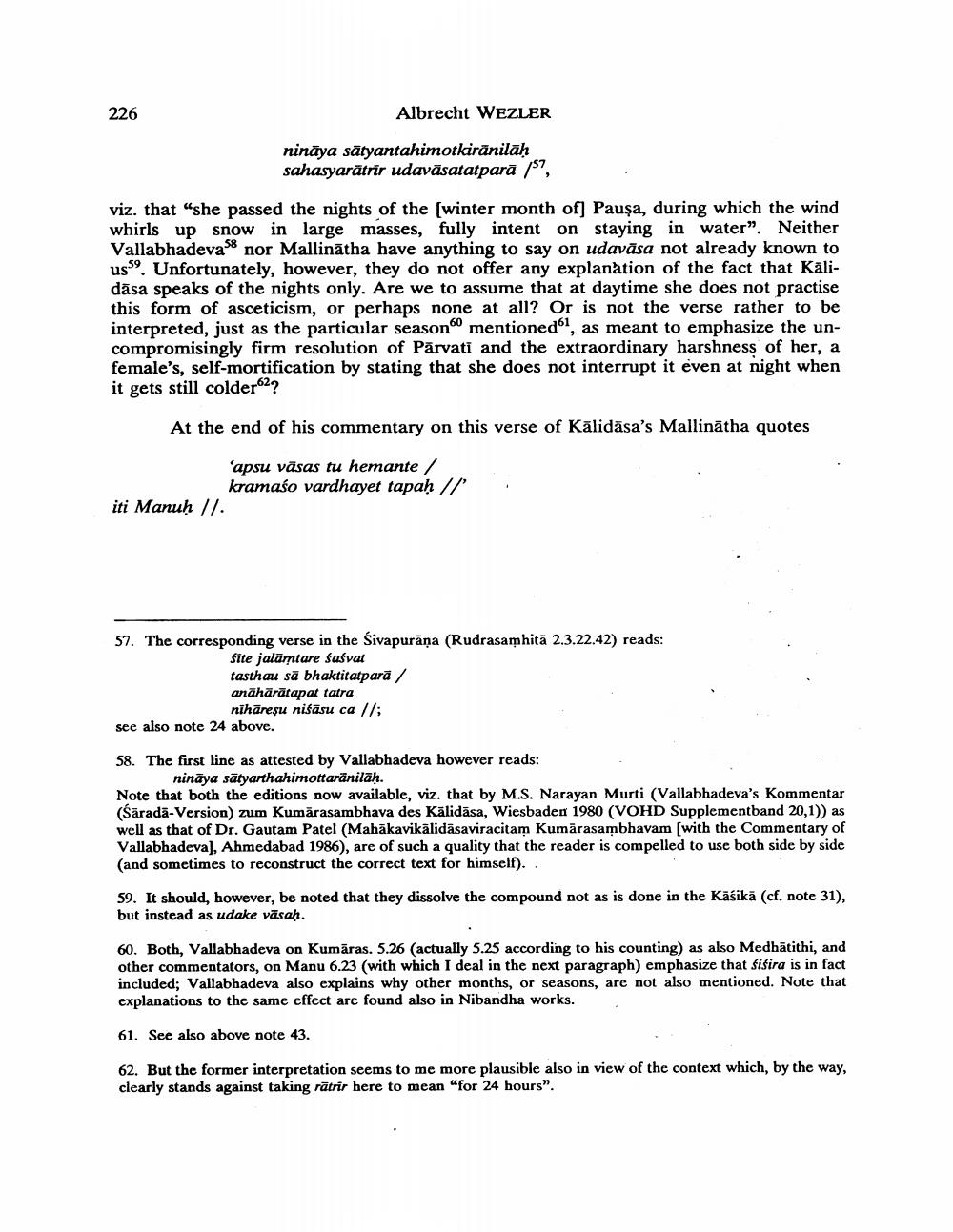________________
226
Albrecht WEZLER
ninäya sätyantahimotkiränilah sahasyarätrir udaväsatatparā /7.
viz. that “she passed the nights of the (winter month of] Pausa, during which the wind whirls up snow in large masses, fully intent on staying in water". Neither Vallabhadevas nor Mallinātha have anything to say on udavāsa not already known to uss. Unfortunately, however, they do not offer any explanation of the fact that Kalidāsa speaks of the nights only. Are we to assume that at daytime she does not practise this form of asceticism, or perhaps none at all? Or is not the verse rather to be interpreted, just as the particular season mentionedól, as meant to emphasize the uncompromisingly firm resolution of Parvati and the extraordinary harshness of her, a female's, self-mortification by stating that she does not interrupt it even at night when it gets still colder62?
At the end of his commentary on this verse of Kālidāsa's Mallinātha quotes
‘apsu väsas tu hemante /
kramaso vardhayet tapah // iti Manuḥ 11.
57. The corresponding verse in the sivapurāņa (Rudrasamhita 2.3.22.42) reads:
site jalämtare fasvat tasthau sa bhaktitatparā anahärātapat tatra
nihāresu nišāsu ca 17; see also note 24 above.
58. The first line as attested by Vallabhadeva however reads:
nināya sätyarthahimottaränilā”. Note that both the editions now available, viz. that by M.S. Narayan Murti (Vallabhadeva's Kommentar (Śäradā-Version) zum Kumārasambhava des Kālidāsa, Wiesbaden 1980 (VOHD Supplementband 20,1)) as well as that of Dr. Gautam Patel (Mahākavikālidāsaviracitam Kumārasambhavam (with the Commentary of Vallabhadeva), Ahmedabad 1986), are of such a quality that the reader is compelled to use both side by side (and sometimes to reconstruct the correct text for himself).
59. It should, however, be noted that they dissolve the compound not as is done in the Kašikā (cf. note 31), but instead as udake vāsah.
60. Both, Vallabhadeva on Kumāras. 5.26 (actually 5.25 according to his counting) as also Medhātithi, and other commentators, on Manu 6.23 (with which I deal in the next paragraph) emphasize that fisira is in fact included; Vallabhadeva also explains why other months, or seasons, are not also mentioned. Note that explanations to the same effect are found also in Nibandha works.
61. See also above note 43.
62. But the former interpretation seems to me more plausible also in view of the context which, by the way, clearly stands against taking rātrir here to mean "for 24 hours".




